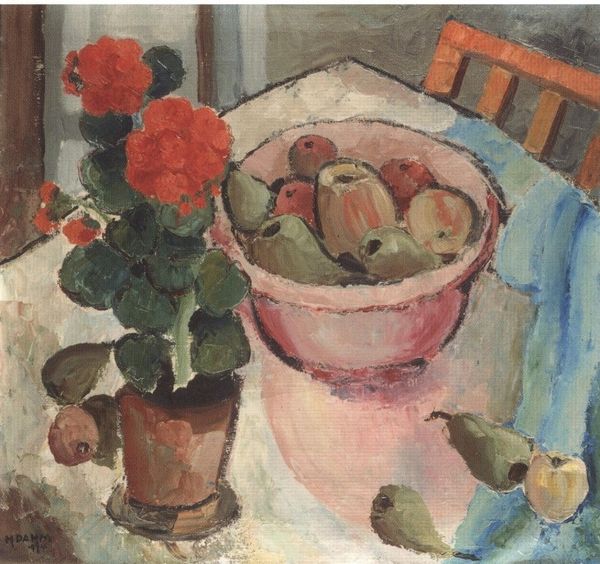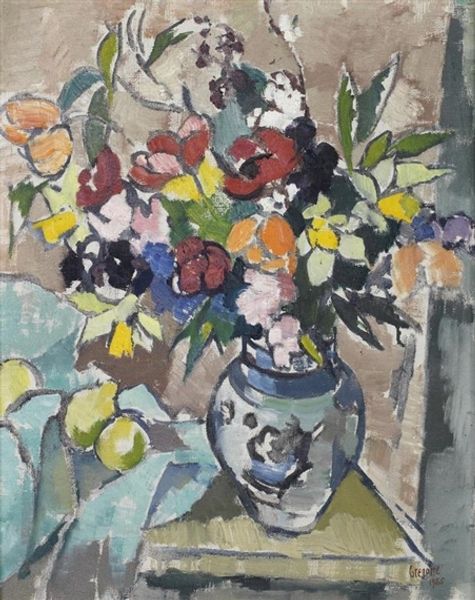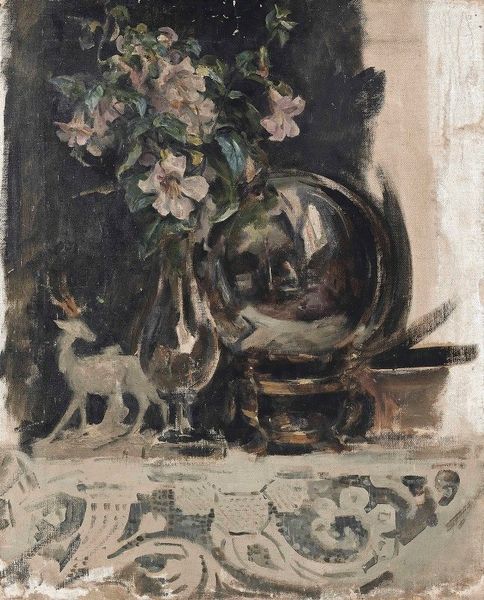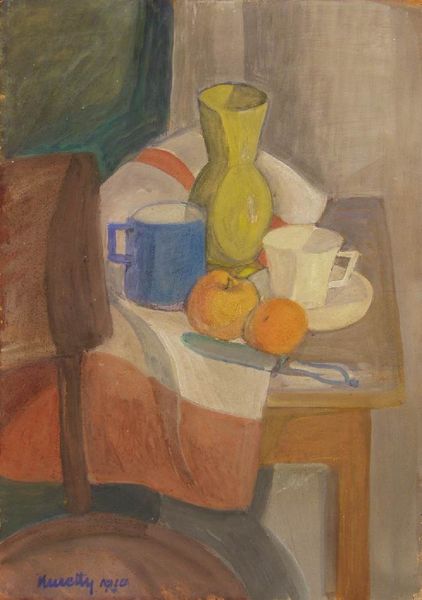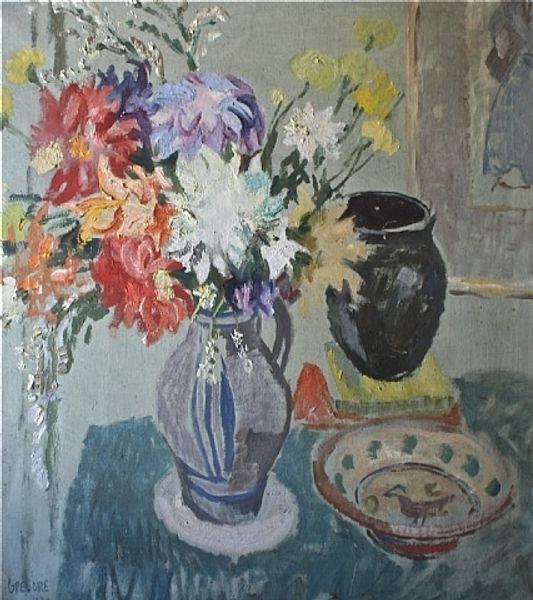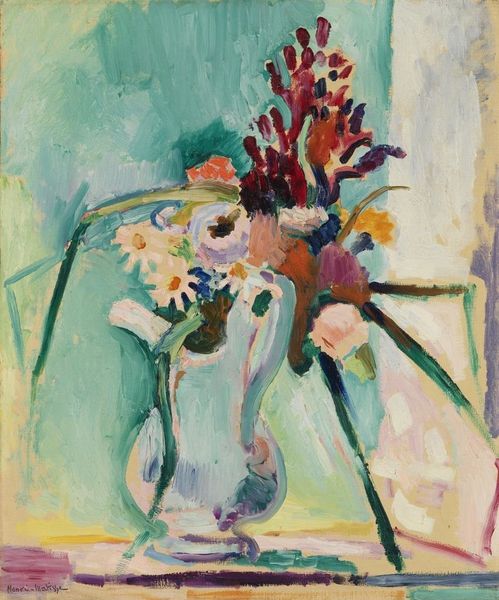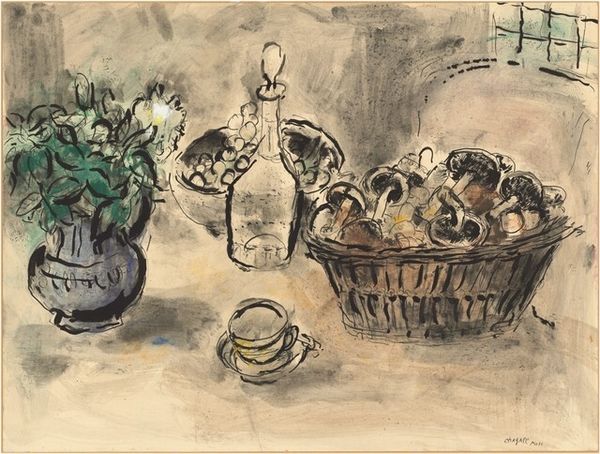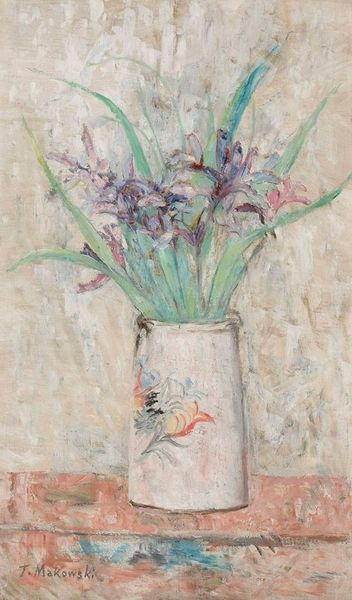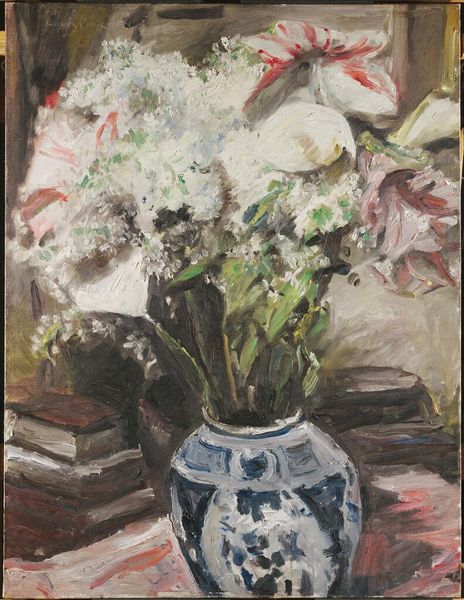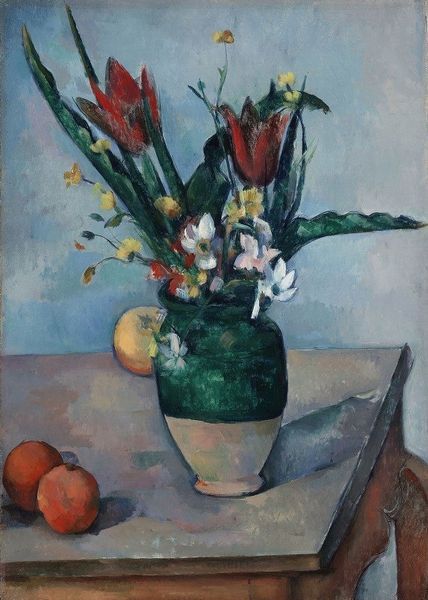
painting, gouache
#
still-life
#
gouache
#
still-life-photography
#
painting
#
gouache
#
oil painting
#
modernism
Copyright: Winifred Nicholson,Fair Use
Curator: Immediately, I'm struck by the light. It’s as if the flowers themselves are the source of illumination in this modest gouache and oil painting. Editor: You're right. It is ethereal. Something about the muted palette evokes a memory of faded elegance. Let’s delve into it. This still life, called "Flower Table," was created by Winifred Nicholson in 1929, at a key point in the development of British Modernism. Curator: Winifred Nicholson certainly uses floral arrangements repeatedly, imbuing her domestic scenes with a particular resonance. The positioning, too, isn't accidental, with flowers held and shown in an isolated corner; what does the placement and containment communicate to you? Editor: The plants arranged on the solid block are more than just decorative; they're representations of fragility and growth placed precariously but safely above their surrounds. In some ways they can be thought of as symbols of our relationship to the external world, nature contained. Curator: This symbol speaks more widely when we look at Nicholson's role and experiences as a woman artist in that period. Many female artists during this period found domestic subject matter providing both freedom and constraints, which speaks to Nicholson finding a certain symbolic meaning of growth and fragility. The arrangement also mirrors broader shifts of Nicholson's time in British artistic circles where artists are examining the meaning of nature. Editor: The translucence here certainly pushes the naturalism of still life conventions and provides a space that reflects a kind of melancholic harmony. But the colors are intentionally placed and distributed in what initially appears random order. I wouldn't say the placement is unintentional at all, everything communicates! Curator: I see her strategic choices as a wider consideration of art historical trends of modernism; this art both depicts an ordinary space and also challenges established notions. The perspective here has us both very close and quite distant, making this feel simultaneously intimate and detached. Editor: So, beyond her engagement with wider art trends and techniques, the intimate view does manage to distill a kind of quiet contemplation. Curator: I agree; "Flower Table" is at once intensely personal and reflective of an era wrestling with the form and function of art itself. Editor: Precisely. Thank you for joining me to cast new light on Nicholson's subtle work; every piece brings with it untold perspectives that enrich and reframe how we comprehend not just her vision but our place in it.
Comments
No comments
Be the first to comment and join the conversation on the ultimate creative platform.

